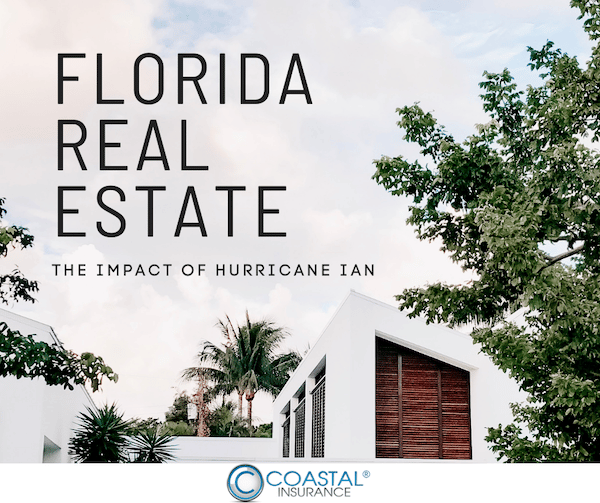Compare Prices & Start Saving Today!
Common Homeowners Insurance Discounts
New Homes may enjoy discounts up to 14%.
Security Systems such as deadbolt locks, simple alarm systems, and smoke detectors may reap discounts from 1-5%. Sophisticated monitoring services and integrated sprinkler systems may reduce your premiums as much as 20%.
Combined Policies: If you combine your automobile and homeowner policy with the same carrier you may obtain discounts from 5% to 15%.
Carrier Longevity: If you maintain your coverage with the same carrier for a number of years they will usually reward you with a discount.
Retired Homeowner: On average stays home longer and may be rewarded with a 5% discount.
Non-smoker: Some carriers reward non-smokers a 5% discount.
Verified Google Reviews
Jamaica NY Home Insurance
Coastal Insurance Solutions has helped many people in Jamaica, New York find the ideal homeowners insurance for them. We work with over thirty companies and check the market in one step, which gives us the ability to offer our customers very competitive rates. We also are able to send you up to ten proposals for you to review, all completely free, as well as advise you when it comes to selecting a company based off our claims experience, rating and price. We know that owning a home is a financial investment as well as an emotional one, and our number one goal is to protect your family’s assets.
Call us today to speak with one of our friendly licensed agents, and fill out the information form to get the best price out there today!
Get 10 FREE QUOTES from Top-Rated Insurance Companies
Homeowners Insurance Basic Coverages
Coverage A: Dwelling
Dwelling coverage covers the cost of rebuilding the house itself using like materials. This coverage also includes any permanent attachments, including central air conditioning equipment, heating and plumbing equipment, and similar attached items.
Coverage B: Other Structures
Fences, pools, gazebos, sheds, and other structures that are not attached to your home are covered by Coverage B, other structures coverage. The value of this coverage is usually set to 10% of the dwelling coverage amount but can be changed to a higher coverage amount if needed.
Coverage C: Personal Property
Personal belongings are described as personal property on your home insurance policy. This coverage would include common household items like televisions, furniture, clothing, and other common belongings. Personal property coverage is usually assigned a value of at least 50% of the dwelling coverage on a homeowners insurance policy, but this coverage amount can often be adjusted.
Many homeowners insurance policies cover personal property on an actual cash value basis. What this means is that if your personal property is lost, damaged, or destroyed in a covered claim, your insurer will pay a depreciated value based on wear and tear due to age. Some insurers provide an option for personal property coverage at replacement cost value, which covers your personal property for the full cost of replacement, typically for a slightly higher premium.
Certain types of items, such as jewelry, firearms, furs, and similar items have limited coverage on a homeowners insurance policy. These items can be added to your policy as an endorsement to insure them to their full value.
Coverage D: Additional Living Expenses
If a covered claim forces you out of your home temporarily while your home is being repaired, additional living expenses are covered by Coverage D. This can include the cost of hotels or of eating out and this coverage is designed to cover the difference between your normal living expenses and the higher temporary expenses you experience due to a claim. Typically, Coverage D is equal to 20% of the coverage amount for Coverage A, dwelling coverage.
Coverage E: Personal Liability
Coverage E, commonly known as personal liability coverage, protects you against lawsuits for bodily injury to others or damage to the property of others due to negligence. Coverage amounts typically start at $100,000, although most policies provide $300,000 of coverage or higher. Personal liability coverage on your home insurance also pays for your legal defense, which can be a sizable expense in itself.
Common risks include dog bites and slip and fall accidents, but accidental damage to the property of others is also covered.
Households with pools or children who have friends who visit your home may wish to consider a higher coverage amount. This coverage is available for all family members in the household.
Coverage F: Medical Payments
Your home insurance policy also provides coverage for small injuries to others that don’t involve a lawsuit. Accidents can happen, but many accidents are minor, only requiring basic medical attention.
Get 10 FREE QUOTES from Top-Rated Insurance Companies
All Risk vs. Named Peril
A homeowners insurance policy can be either an all-risk policy or a named peril policy, with the difference between the two being which risks to your home are covered by the policy. As its name suggests, an all-risk policy is more inclusive, providing coverage for almost all risks to your home except for specifically excluded risks.
A named peril homeowners insurance policy only provides coverage for the home that is specifically named as coverage items on your policy. Named peril policies also have specific exclusions to coverage while also excluding any risks that are not specifically named as covered perils.
Covered personal property perils may differ from those covered for the dwelling, depending on the type of policy. The five types of policies for single-family homes are HO-1, HO-2, HO-3, HO-3 with HO-15, and HO-8.
HO-1 Basic Homeowner
A basic homeowners insurance policy, sometimes called an HO-1 policy, provides coverage for fire and lightning, as well as wind and hail damage — but being a basic insurance policy, omits coverage for several other risks to homes. Due to consumer demand for broader coverage, this type of policy is not commonly available from insurers.
HO-2 Broad Basic Homeowner
An HO-2 homeowners insurance policy expands upon the coverage provided by an HO-1 policy by adding some additional perils to the coverage for the dwelling: falling objects, roof collapse due to the weight of ice or snow, building collapse, water damage due to bursting pipes or sudden leaks, frozen pipes, and damage from electrical surges.
HO-3 Special Extended Homeowner
Currently the most popular type of homeowners insurance policy, an HO-3 policy provides all-risk coverage for your dwelling while providing coverage for 18 named perils for your personal property. All of the coverages provided by an HO-2 policy apply to personal property on an HO-3 policy. Covered perils for the dwelling itself are limited only by named exclusions.
HO-3 with HO-15 Comprehensive
This type of policy does not limit coverage for personal property to named perils, instead of covering both your home and personal belongings for all perils except for those specifically excluded from your policy. Depending on the insurer, a similar type of comprehensive coverage may also be available through an HO-5 policy.
HO-8 Modified Homeowner
Coverage for historic homes is often provided through an HO-8 homeowners insurance policy, which provides limited coverage similar to an HO-1 policy but is designed to cover homes that may cost significantly more to rebuild than their market value.
Homeowner Insurance Tips Video
Get 10 FREE QUOTES from Top-Rated Insurance Companies
About Jamaica NY
Jamaica is a middle-class neighborhood in the New York City borough of Queens. The neighborhood is part of Queens Community Board 12, which also includes Hollis, St. Albans, Springfield Gardens, Baisley Pond Park, Rochdale Village, and South Jamaica. Jamaica is patrolled by the NYPD’s 103rd, 113th & 105th Precincts.
It was settled under Dutch rule in 1656 in New Netherland as Rustdorp. Under British rule, Jamaica became the center of the “Town of Jamaica”. Jamaica was the county seat of Queens County from the formation of the county in 1683 until March 7, 1788, when the town was reorganized by the state government and the county seat was moved to Mineola (now part of Nassau County). In 1814, Jamaica became the first incorporated village on Long Island. When Queens was incorporated into the City of Greater New York in 1898, both the Town of Jamaica and the Village of Jamaica were dissolved, but the neighborhood of Jamaica regained its role as county seat. Today, some locals group Jamaica’s surrounding neighborhoods into an unofficial Greater Jamaica, roughly corresponding to the former Town of Jamaica, including Richmond Hill, Woodhaven, St. Albans, Rosedale, Springfield Gardens, Hollis, Laurelton, Cambria Heights, Queens Village, Howard Beach and Ozone Park.









![IBA Top Retail Brokers 2024 Medal[88] IBA's Top Retail Broker 2023](https://coastalinsurancesolution.com/wp-content/uploads/2024/07/IBA-Top-Retail-Brokers-2024-Medal88.png)



